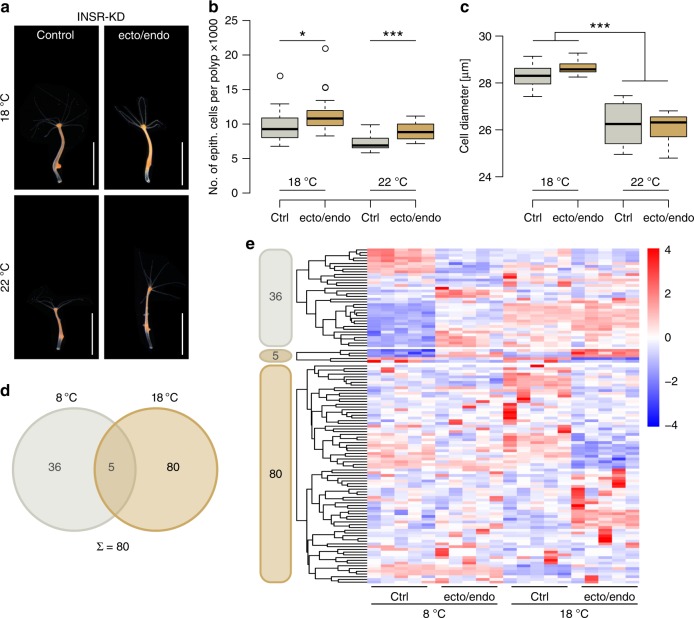Fig. 2.
INSR-KD induces larger polyp size. a Pictures of control and INSR-KD polyps at 18 °C and 22 °C with bud protrusion. Scale bar: 5 mm. b Control and INSR-KD polyps reared at temperatures from 18 °C to 22 °C. The INSR-KD results in larger maximum size with more epithelial cells per polyp. Note, that KD animals still increase in size at lower temperatures. c Cell size is not affected by the KD of the INSR, though cell size is still temperature sensitive. Boxplots show median (horizontal line), lower and upper quantile (box), lower and upper 1.5 times interquartile range (whiskers), and outlier points). n = 20 samples/368394 cells (18 °C ctrl), 20 samples/422092 cells (18 °C ecto/endo), 16 samples/226238 cells (22 °C ctrl), 16 samples/272842 cells (22 °C ecto/endo), *p ≤ 0.05, ***p ≤ 0.001 (U-test + FDR-correction). d Venn diagram showing the overlap of differentially expressed genes by INSR-KD at 8 °C and 18 °C. 80 genes (bold) are associated with increased size at 18 °C (see Supplementary Fig. 5a, b). e Heatmaps representing the relative expression level of the differentially expressed genes (rows) from the venn diagram of the INSR-KD animals. Genes were clustered hierarchically per heatmap. Expression values were log2-transformed and median-centered by transcript. n = 5 libraries (Wald-test + FDR-correction)

